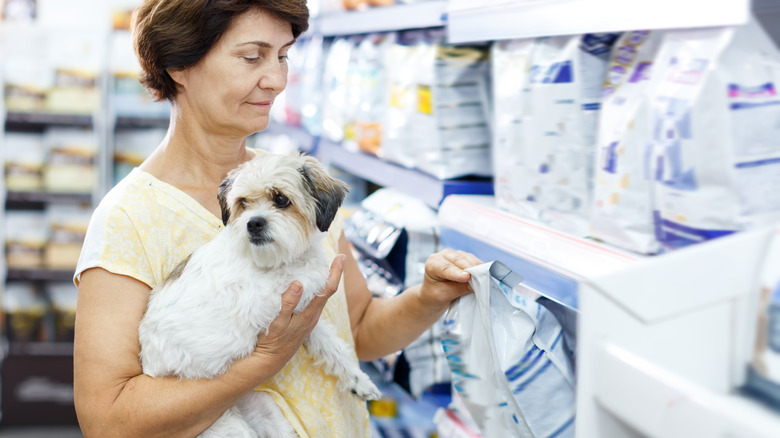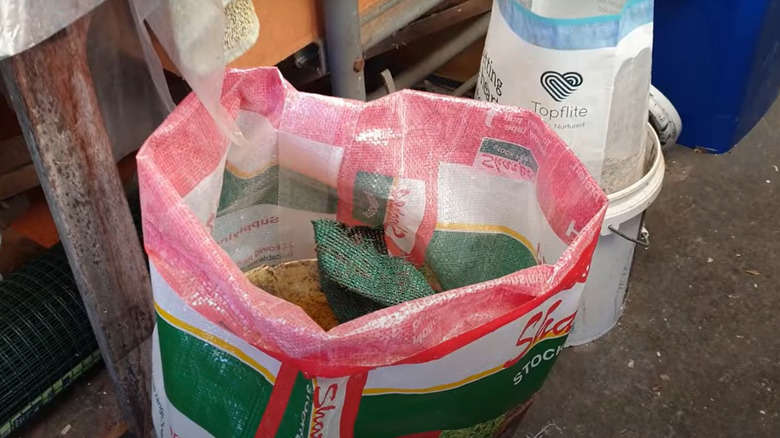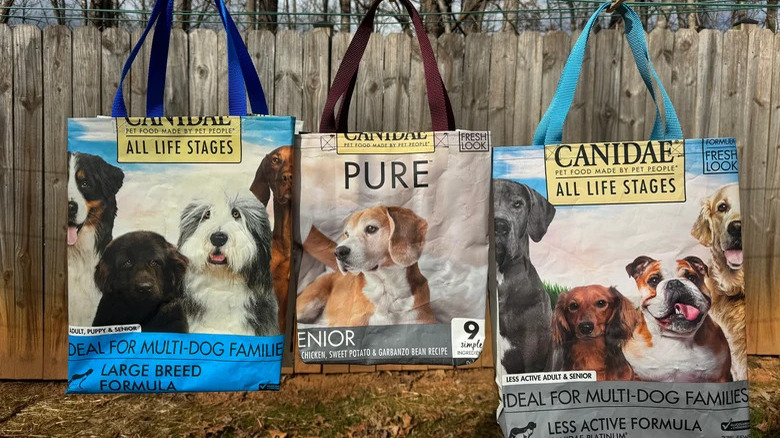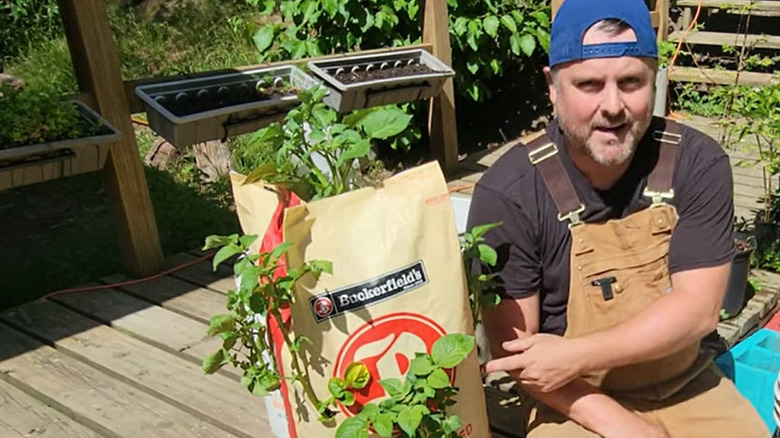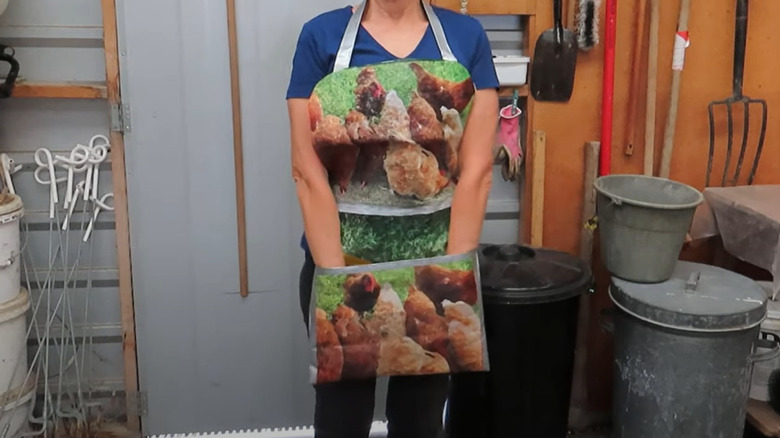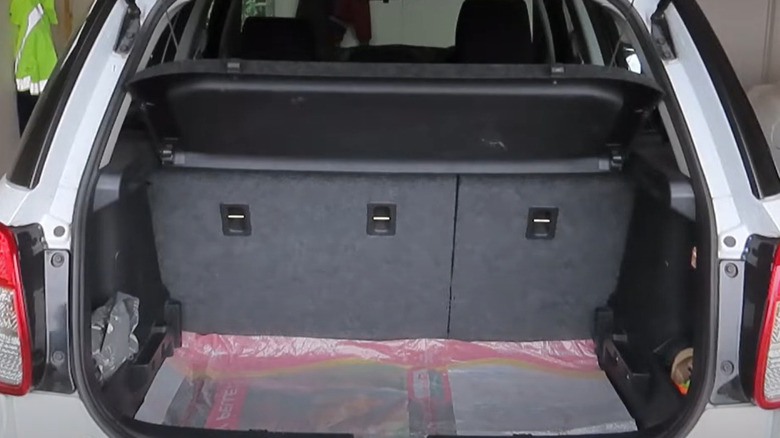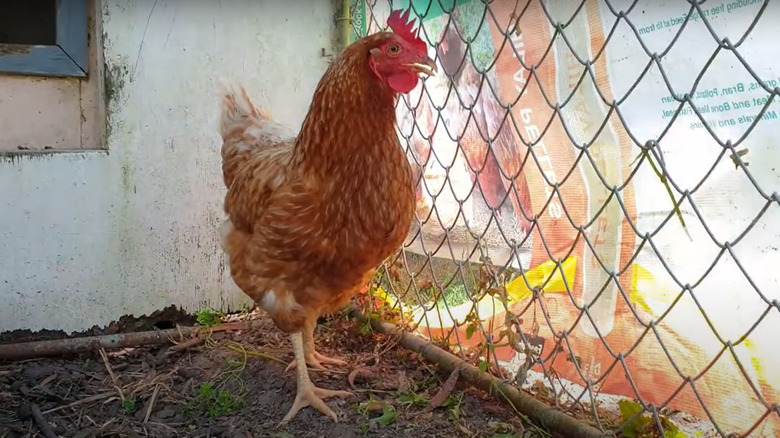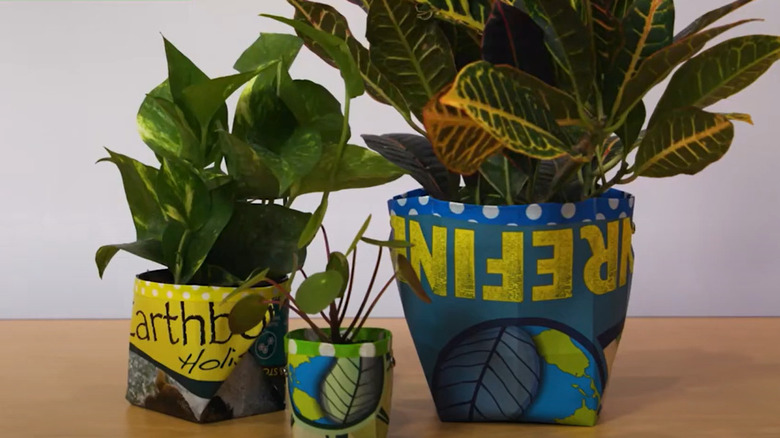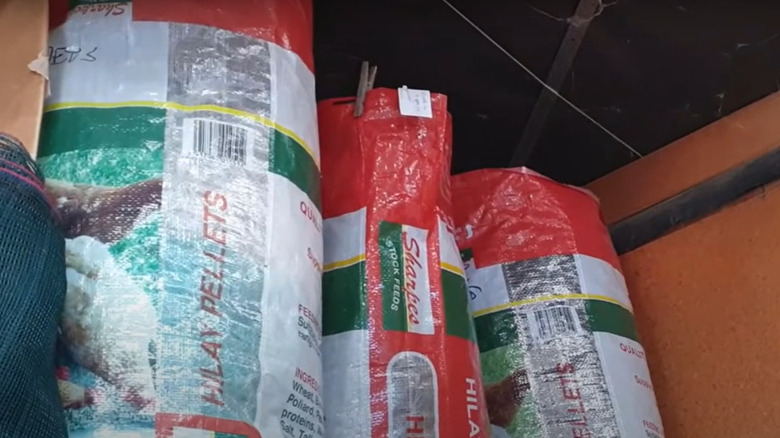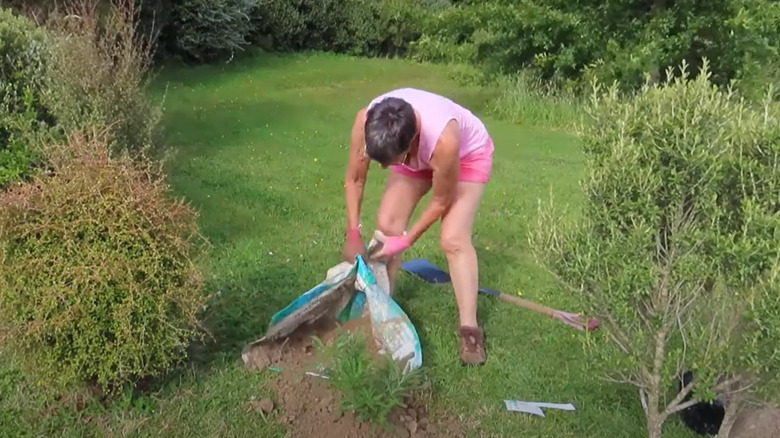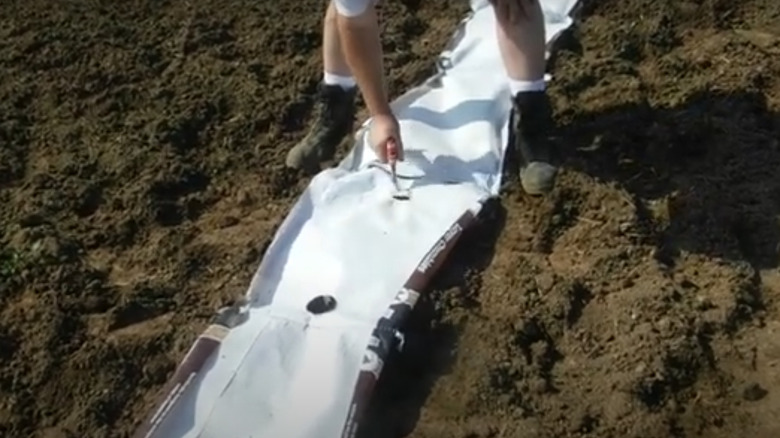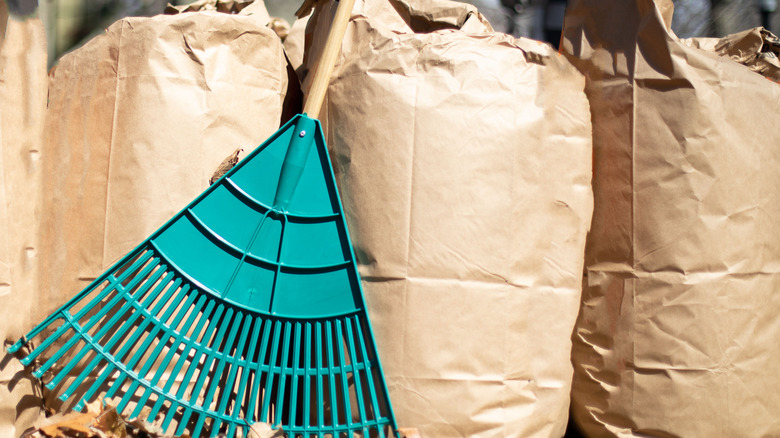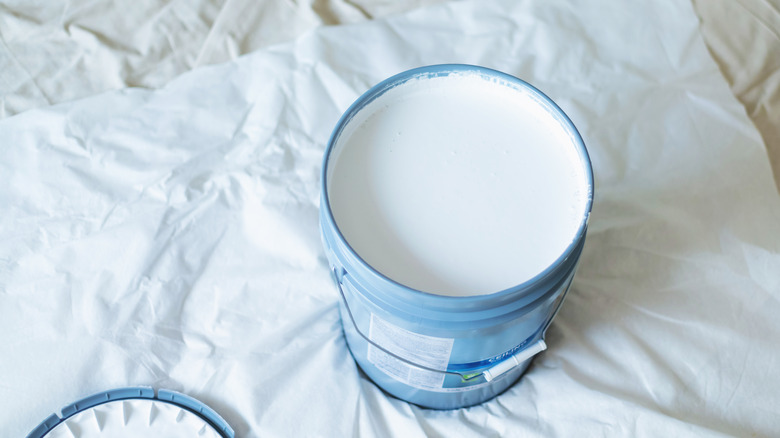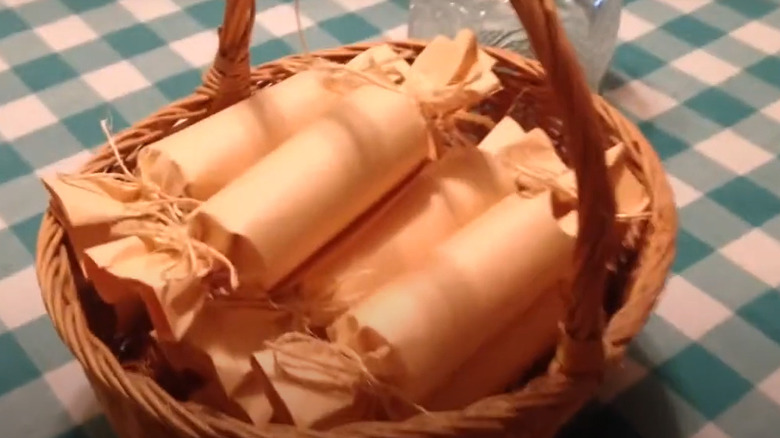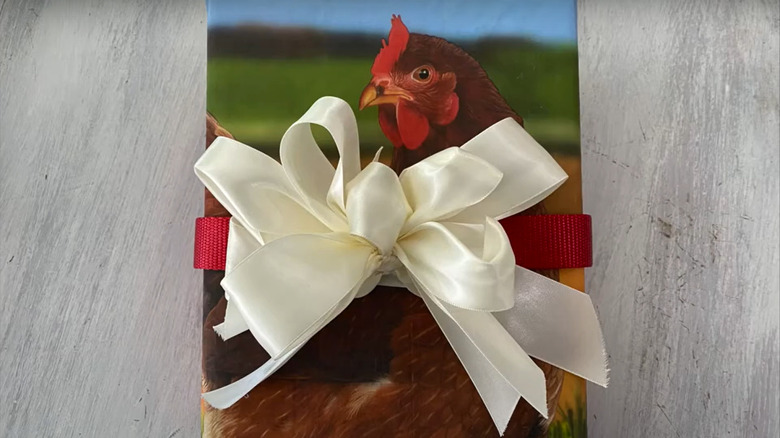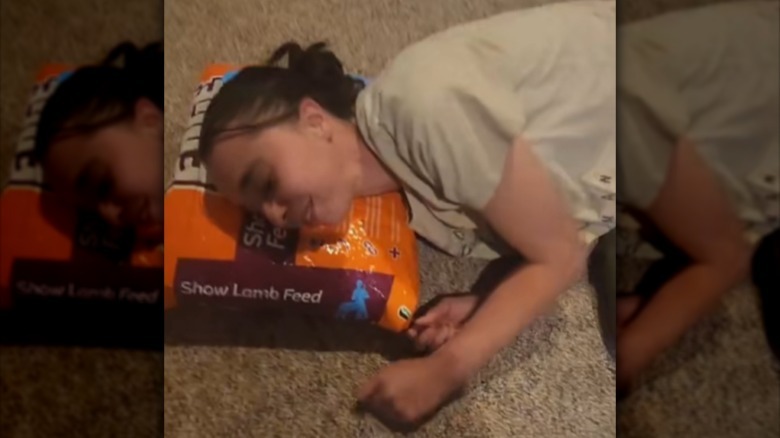15 Smart Ways To Repurpose Your Pet Food Bags In The Home & Garden
We may receive a commission on purchases made from links.
When you lug that 50-pound sack of dog food onto your shoulder, you get a good idea of how very strong those bags are. Some bags are made of layered laminated paper, and others are heavy plastic. Large sizes, durable materials, and often with cute animals and graphics depicted on the sides make these containers ideal for reuse. The next time you bring home some eats for the animals in your life, repurpose the bag rather than tossing it. Reusing plastic containers in your home and garden is becoming more commonplace, so why not pet food bags?
Take advantage of its bag form for growing plants, crafting a tote bag, hauling yard waste, or even something as simple as taking out the trash. Cut a bag open to catch messes, to use as a weed barrier in your garden, or to stitch into an apron. The DIYs described here are for plastic bags unless mentioned otherwise. Save it from the trash or at least get one more use out of it before it heads to the landfill.
Some places like Pet Supplies Plus and Wag n Wash have drop-off recycling programs for animal food packaging. However, for most of us, once our furry children eat their grub, the bag goes straight into the trash. Instead, grab your scissors, maybe a sewing machine, and a few other supplies and give that bag a second life. We've put together 15 ideas for how to take advantage of this tough packaging.
1. Improvised trash can
Start easy! Little prep, no sewing, and no skill is required to sub a pet food bag for a trash bag. Stand up an empty paper food bag, flatten the bottom of the bag to make it more stable, and fold down the top to hold the bag open. The thick and bulky material of the bag makes cinching the top difficult, so the easiest way to seal the bag for disposal is to close and roll down the open end, then secure it with tape to the body of the bag.
2. Tote bag
Converting your empty feed bags into totes is a logical conversion that's as easy as making a few snips with scissors or as involved as busting out the sewing machine. The range of sizes for food and treat bags opens up an overwhelming amount of possible uses. Make a few horizontal cuts near the top of a small bag to hold clothespins or produce as you pick it, or sew on handles to a bag you've enhanced with a reinforced base. You can even transform it into a backpack with straps made of bag scraps.
3. Grow bags
Sowing seeds in soil-filled bags is an ideal way to fit a garden into a patio space. Pet food bags filled with potting soil stand in beautifully for prefabricated grow bags that can set you back a pretty penny. Consider using grow bags for tomatoes, cucumbers, beans, and lettuce. Root vegetables like radishes, carrots, and beets also do well in grow bags. Fill each bag about ⅔ full to keep it from tipping over, and spread the soil widely enough in the bottom of the bag to make a good base. Roll the edges over and plant your produce.
4. No-sew apron
One large bag or a mosaic of smaller bags paired with a roll of duct tape can yield you a waterproof, easily wipeable apron that's useful both indoors and out. When ultra-strong duct tape exists, there's no need to fire up the sewing machine.
For small amounts of coverage, use a simple rectangle of plastic that runs the length of your chest to mid-thigh. Go for extra protection by attaching two smaller rectangles to the sides that reach around your waist. Tape the pieces into a shape you like and you're done!
5. Car or trunk mat
A large bag that once held dog chow or chicken feed is ideal to help protect your car's interior from dirt and spills. Slice open a bag to make a sheet, lay it on the floor of your trunk or inside a hatchback, and place potentially messy items on it. Bring one along every time you go to the garden center, pick up cans of paint, or transport food. Plastic bags are best when you have wet cargo while paper bags will do the trick to contain dry messes.
6. Protective lining for outdoor structures
Armed with a staple gun and some feed bags, you can tack up your empties on the sides of an outdoor structure. The bags can provide shade and shelter from wind and rain, and if you nail them up without cutting them into sheets, they make perfect insulation for chilly nights.
Along those same lines, you can use feed bags to hold compost. Creating a compost bin made from wood pallets is an easy afternoon task, but the food and garden scraps tend to fall through the slats. Hold in your valuable soil-to-be with a few feed bags attached along the sides.
7. Fold up a planter
It's not hard to come up with common household items you can turn into beautiful planters, but you probably never thought of crafting a pot for a plant out of pieces of pet food bags. With the help of some brass connector brads, a hole punch, scissors, and some origami-style folding, morph a square cut from a bag into an adorable pot for indoors or out. A bit of colorful fabric or bias tape around the top edge finishes the look, and your upcycled container is ready to welcome a leafy resident.
8. Gardening and outdoor gear storage
If you have reams of bird netting, a pile of water walls for your plants, or outdoor furniture covers, tuck them into large feed bags for seasonal storage. The thickness of the bag will keep large sheets of material from getting dirty or damaged, and the soft sides of the filled bags slide easily onto shelves housing other storage. For extra protection, roll down the tops of the bags, and clip them closed. Use the same idea for camping equipment or other fabric outdoor supplies to ensure they stay clean and dry while you're not using them.
9. Tree planting helper
When you're carving out a hole to plant a small tree or bush, have a large paper or plastic feed sack nearby. If your soil is particularly wet, a plastic bag will work best. Cut it open into a sheet, and as you remove the dirt, pile it onto the sheet. When you are ready to refill the hole after planting, not only can you slide the dirt pile toward the hole without picking up a shovel, you can also pick up the sides of the sheet to pour the dirt where you want it.
10. Gardening fabric
Large food bags cut open into sheets have infinite uses in the garden. Spread it out and weigh it down over your planted and watered seed to help speed up germination. Or, plant seedlings through holes in the plastic so that it acts as a fabric mulch. On frosty nights, drape them over delicate plants to protect them. Line a raised bed with paper bags before adding soil to slow encroaching weeds. Paper bags also make great mulch covering to hold moisture and keep weeds down without creating as much microplastic litter as plastic sheets do.
11. Bag up landscape waste
Paper pet food bags that don't hold up to long-term reuse are great for holding fallen leaves, weeds, and other plant matter. The thickness is nice for thorny branches that puncture plastic bags. Once you've begun filling a food bag with yard waste, fold the edges over to create a standing waste bin. The waste at the bottom of the bag will hold it upright as you add more material. Transporting plant matter to a compost pile is no trouble in a food bag. Just dump the contents instead of getting out a pitchfork.
12. Drop cloths
Why buy a plastic drop cloth when you need to paint your walls? Cut open a collection of bags, tape them together, and lay them across your floors to protect them from drips. They'll stay in place better than thin plastic ones as you move around the room.
You can also cover your table with one or two for an easy-clean crafting station. If you have several people creating at once, cut large bags into two sheets, and give each person their own work space. Once you're done, wipe them down and store them for next time.
13. Paper fire starters
If your kibble or kitty litter comes in paper bags, they typically consist of several layers of paper with the interior layer laminated in plastic. Use the non-laminated paper to roll fire starters made with upcycled empty toilet paper rolls stuffed with dryer lint! Separate the laminated paper from the non-laminated layers from the bag. Clean out your dryer lint, and fill paper rolls with it. Wrap the rolls in sheets of repurposed paper feed bags. Tie the ends with string, and sit them by your fireplace or campfire for quick access.
14. Gift wrapping
Take advantage of the bright colors and fluffy friends that are on many feed bags by using them to wrap gifts. Either paper or plastic bags will do. Cut pieces of bag with the most attractive graphics centered in the piece so that the pretty parts will adorn one side of the package. Wrap it just like you would with paper, and add a bow. For long and narrow or cylindrical offerings, the dimensions of large feed bags work wonders to cover packages. After opening the gift, your recipient can have a go at reusing the sheet.
15. Waterproof outdoor pillow
Feed bags stuffed with hard-to-recycle plastic bags that come from bread, frozen produce, and even the wrapping from paper towel come together to make a very comfy cushion. The plastic bags spring back perfectly when you get up or move. Collect clean and dry plastic bags from any source and store them in the feed bag as your supply grows. Once it's full enough to be supportive, sew the top of the bag shut, and you have a waterproof no-waste pillow. Make the surface more pleasant to lounge on by draping the pillows with sheets or blankets.
